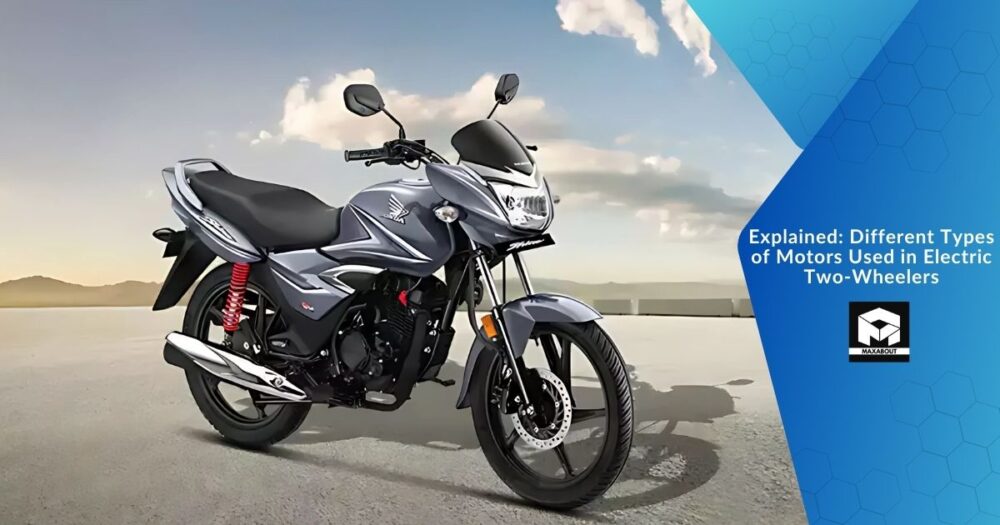Electric two-wheelers, like e-bikes and scooters, are becoming more popular as people look for eco-friendly ways to travel. One of the most important parts of these vehicles is the motor. Different types of motors can affect how fast, how far, and how well the vehicle performs. In this article, we’ll explore the various kinds of motors used in electric two-wheelers, their features, and what makes each one special.
Key Takeaways
- Electric two-wheelers use different types of motors, each with unique benefits.
- Brushless DC motors are popular for their efficiency and low maintenance needs.
- Brushed DC motors are simpler but can wear out faster than other types.
- Induction motors are known for their durability and are often used in larger vehicles.
- Hub motors offer a compact design and are great for city riding.
Overview of Electric Two-Wheeler Motors
Importance of Motor Selection
Choosing the right motor for electric two-wheelers is crucial. The motor affects the vehicle’s speed, efficiency, and overall performance. A well-chosen motor can enhance the riding experience significantly.
Basic Working Principle
Electric two-wheeler motors convert electrical energy into mechanical energy. This process involves:
- Power Supply: The battery provides energy.
- Motor Operation: The motor uses this energy to create motion.
- Wheel Movement: The wheels turn, propelling the vehicle forward.
Common Motor Types
There are several types of motors used in electric two-wheelers, each with its own features:
- Brushless DC Motors (BLDC): Known for their efficiency and low maintenance.
- Brushed DC Motors: Simpler design but may require more upkeep.
- Permanent Magnet Synchronous Motors (PMSM): Offer high performance and efficiency.
Understanding the different types of motors helps in making informed choices for electric two-wheelers, ensuring better performance and satisfaction.
Brushless DC Motors (BLDC)
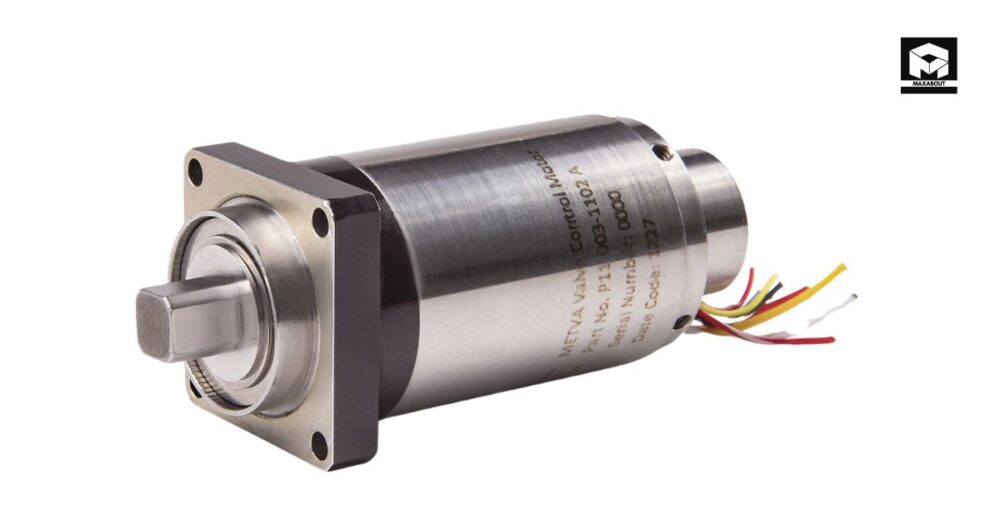
Advantages of BLDC Motors
- Higher efficiency compared to other motor types.
- Longer lifespan due to fewer moving parts.
- Quieter operation, making them ideal for urban environments.
Applications in Electric Two-Wheelers
BLDC motors are commonly used in:
- Electric scooters
- E-bikes
- Motorcycles
Maintenance and Durability
- These motors require less maintenance because they don’t have brushes that wear out.
- They are built to last, making them a reliable choice for electric two-wheelers.
Brushless DC motors are a popular choice in the electric two-wheeler market due to their efficiency and low maintenance needs.
Brushed DC Motors
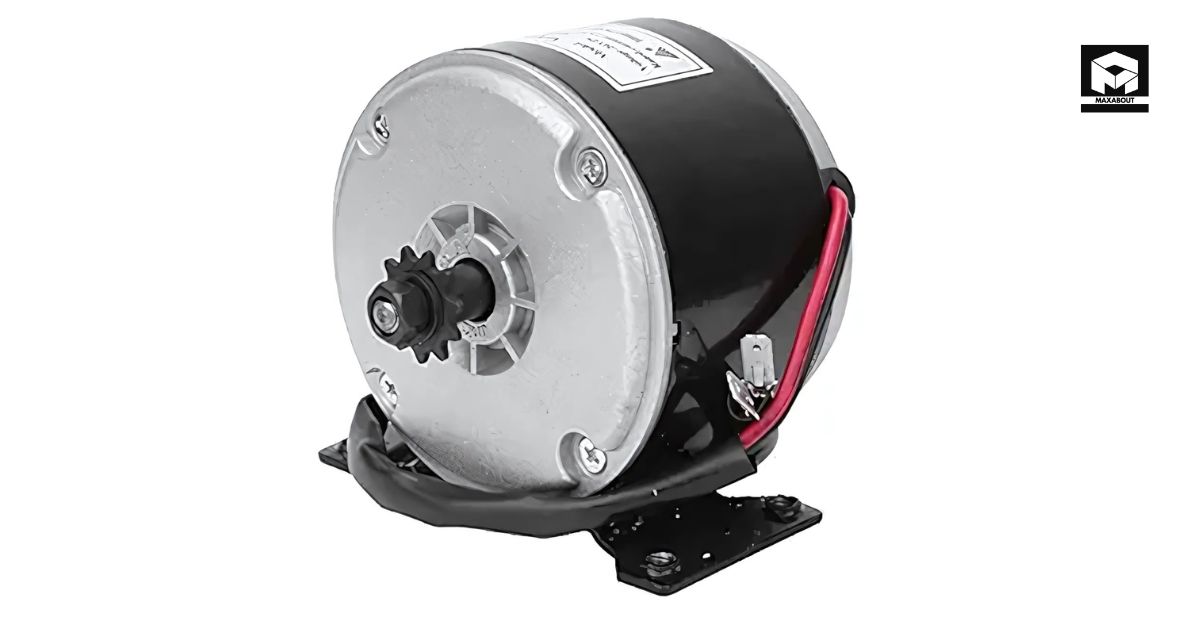
How Brushed DC Motors Work
Brushed DC motors are simple and effective. They use brushes to transfer electricity to the motor’s rotor. This setup allows the motor to spin and create motion. The main parts include:
- Stator: The stationary part that creates a magnetic field.
- Rotor: The rotating part that turns when electricity flows.
- Brushes: Conductors that touch the rotor to provide power.
Pros and Cons
Brushed DC motors have both advantages and disadvantages. Here are some key points:
- Pros:
- Easy to control speed and direction.
- Lower cost compared to other motor types.
- Simple design makes them easy to repair.
- Cons:
- Brushes wear out over time, needing replacement.
- Less efficient than some other motors.
- Can produce more noise due to brush friction.
Typical Use Cases
Brushed DC motors are commonly found in:
- Electric scooters
- Small electric bikes
- Toys and hobby projects
Brushed DC motors are a popular choice for many electric two-wheelers due to their simplicity and cost-effectiveness.
Permanent Magnet Synchronous Motors (PMSM)
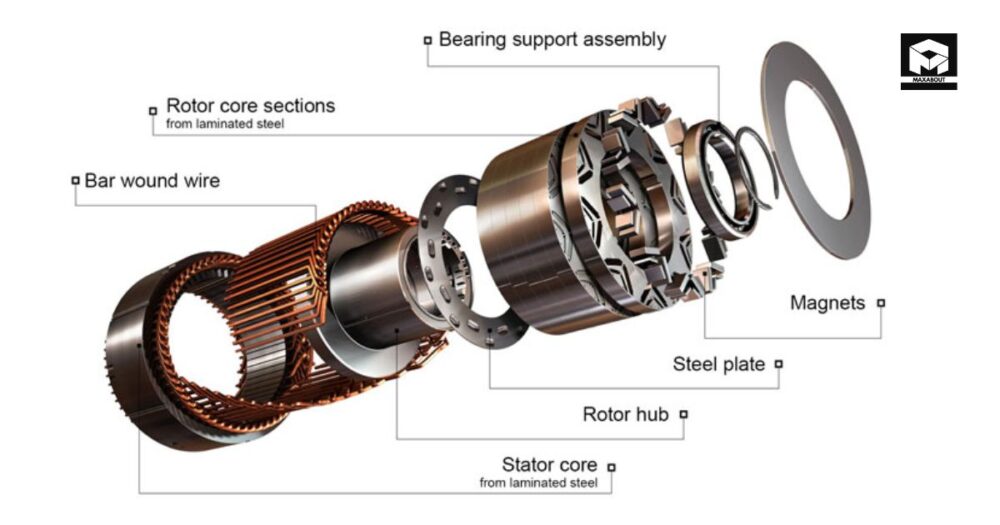
Key Features of PMSM
Permanent Magnet Synchronous Motors (PMSM) are known for their efficiency and reliability. Here are some key features:
- High efficiency: They convert electrical energy into mechanical energy very effectively.
- Compact design: PMSMs are smaller and lighter compared to other motor types.
- Low maintenance: They have fewer moving parts, which means less wear and tear.
Efficiency and Performance
PMSMs stand out in terms of performance. They provide excellent torque and speed control, making them ideal for electric two-wheelers. Some performance highlights include:
- Consistent power output across various speeds.
- Quick response to changes in throttle input.
- Reduced energy loss, leading to longer battery life.
Suitability for Electric Two-Wheelers
PMSMs are a popular choice for electric two-wheelers due to their unique advantages. Here’s why they are suitable:
- They offer a smooth and quiet ride.
- Their lightweight design helps improve the overall efficiency of the vehicle.
- They can handle steep inclines and provide strong acceleration.
In summary, PMSMs are a great option for electric two-wheelers, combining efficiency, performance, and reliability.
Induction Motors
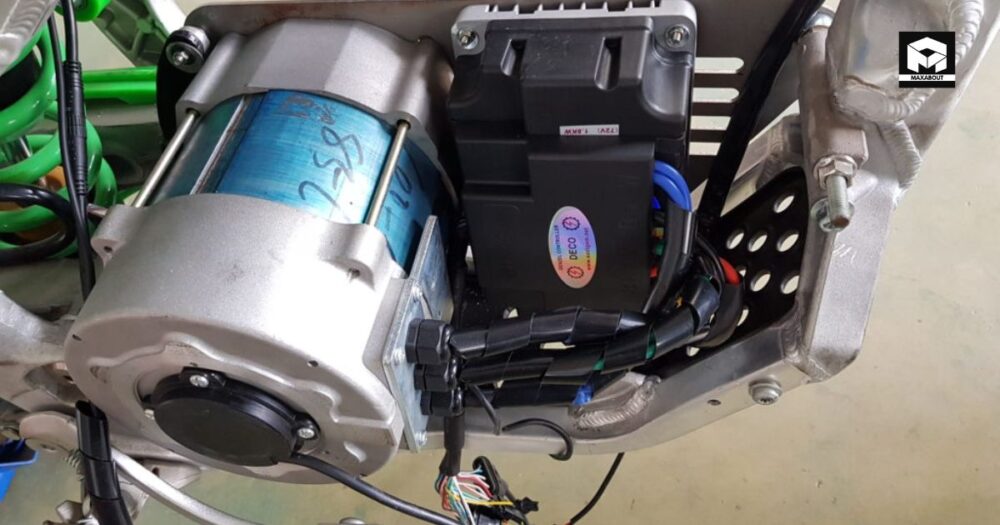
Working Principle of Induction Motors
Induction motors work by using electromagnetic induction to create motion. When electricity flows through the motor, it generates a magnetic field that interacts with the rotor, causing it to spin. This process is efficient and reliable, making induction motors popular in many applications.
Benefits and Drawbacks
- Advantages:
- Disadvantages:
Usage in Electric Two-Wheelers
Induction motors are commonly used in electric two-wheelers for several reasons:
- They provide strong torque, which is great for acceleration.
- Their robust design makes them suitable for different terrains.
- They are often more affordable compared to other motor types.
Induction motors are a solid choice for electric two-wheelers, balancing performance and cost effectively.
Hub Motors
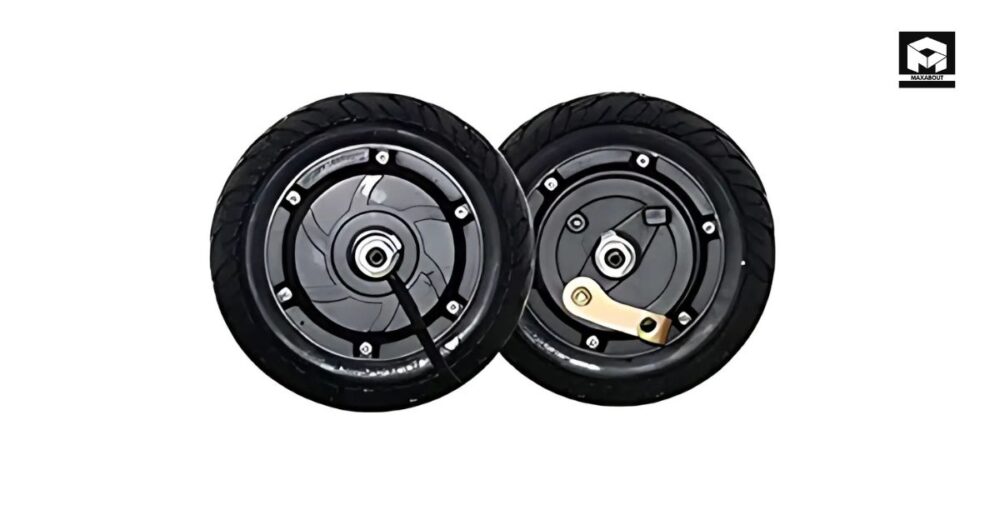
Design and Structure
Hub motors are built directly into the wheel hub, which is the center part of the wheel. This design makes them compact and easy to install. They eliminate the need for complex gear systems. The main components include:
- Motor stator: The stationary part that generates a magnetic field.
- Rotor: The rotating part that turns the wheel.
- Controller: Manages the power supply to the motor.
Performance Characteristics
Hub motors are known for their smooth operation and quiet performance. They provide instant torque, which means they can accelerate quickly. Some key performance traits are:
- High efficiency, especially at low speeds.
- Minimal maintenance due to fewer moving parts.
- Ability to handle various terrains effectively.
Advantages in Two-Wheelers
Using hub motors in electric two-wheelers comes with several benefits:
- Space-saving design: They free up space for other components.
- Simplified installation: Easier to set up compared to traditional motors.
- Enhanced stability: The weight distribution helps in better handling.
Hub motors are a popular choice for electric bikes and scooters because they combine efficiency with ease of use.
Mid-Drive Motors
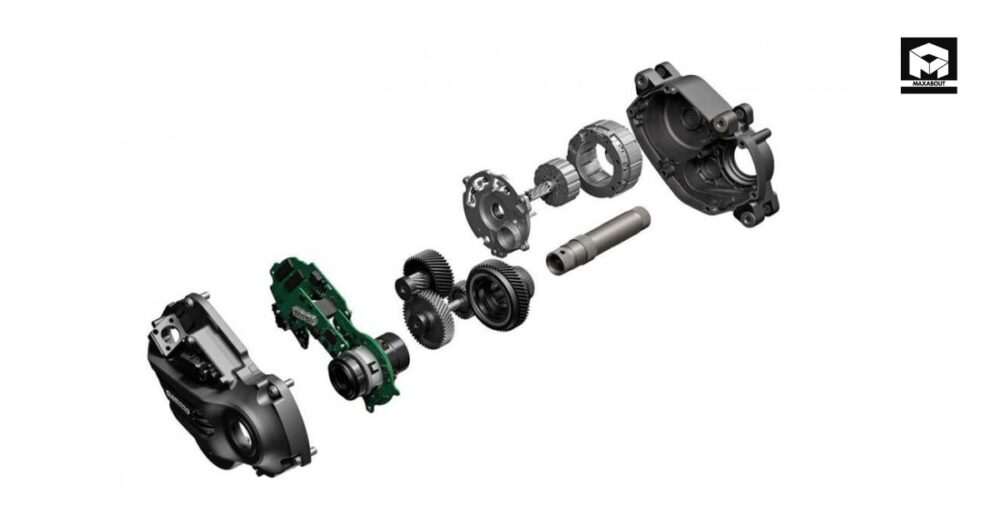
How Mid-Drive Motors Operate
Mid-drive motors are located in the middle of the bike, usually near the pedals. This setup allows the motor to use the bike’s gears, making it easier to climb hills and ride at different speeds. This design helps in achieving better balance and handling.
Performance Benefits
Mid-drive motors offer several advantages:
- Better weight distribution: Since the motor is in the center, it keeps the bike balanced.
- Higher efficiency: They use the bike’s gears to optimize power usage.
- Improved hill climbing: They provide more torque, making it easier to go uphill.
Mid-drive motors are popular for their ability to enhance the riding experience, especially in challenging terrains.
Comparison with Hub Motors
When comparing mid-drive motors to hub motors, consider:
- Weight and balance: Mid-drive motors keep the bike lighter and more balanced.
- Power delivery: Mid-drive motors can adjust power based on the gear, while hub motors deliver power directly.
- Maintenance: Mid-drive systems may require more maintenance due to their complexity, but they often provide a better ride.
Switched Reluctance Motors (SRM)
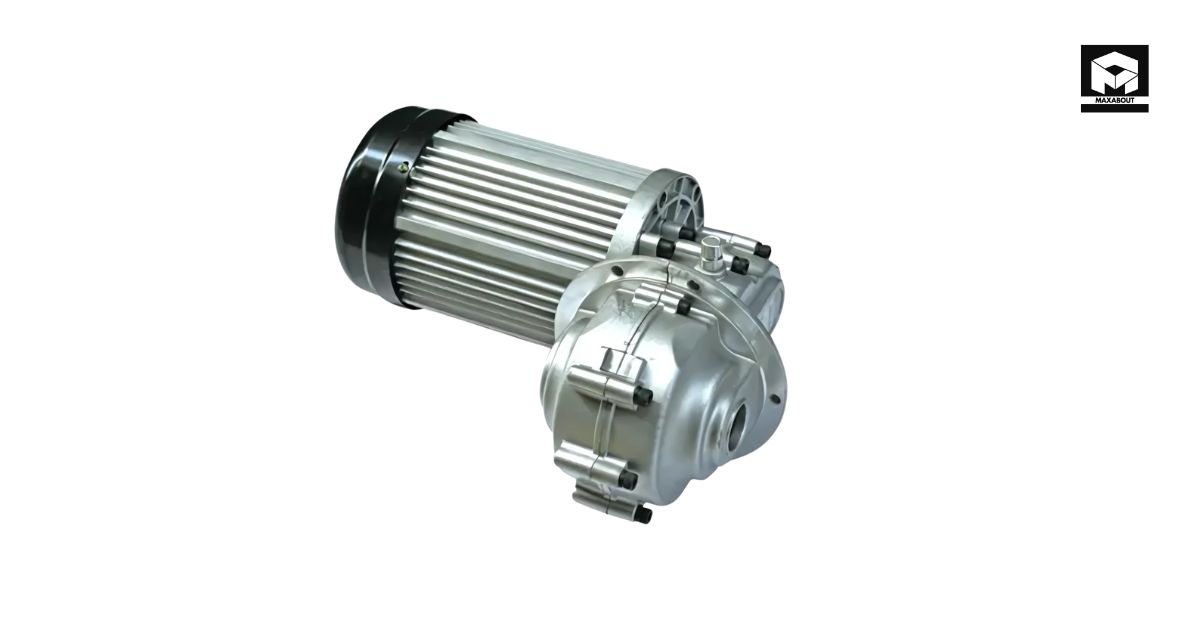
Unique Characteristics of SRM
Switched Reluctance Motors (SRM) are known for their simple design and robust construction. They have no windings on the rotor, which makes them less prone to wear and tear. Key features include:
- High reliability due to fewer parts.
- Ability to operate in harsh environments.
- Simple control methods that can be easily implemented.
Efficiency and Control
SRMs are quite efficient, especially at higher speeds. They can be controlled effectively using modern electronics, which allows for:
- Precise speed control.
- Improved torque performance.
- Reduced energy consumption compared to some other motor types.
Applications in Electric Two-Wheelers
These motors are becoming popular in electric two-wheelers for several reasons:
- They provide good performance at a lower cost.
- Their durability makes them suitable for various riding conditions.
- They can be easily integrated into different designs of electric bikes.
Switched Reluctance Motors are a promising choice for the future of electric two-wheelers, combining efficiency with a simple design.
Axial Flux Motors
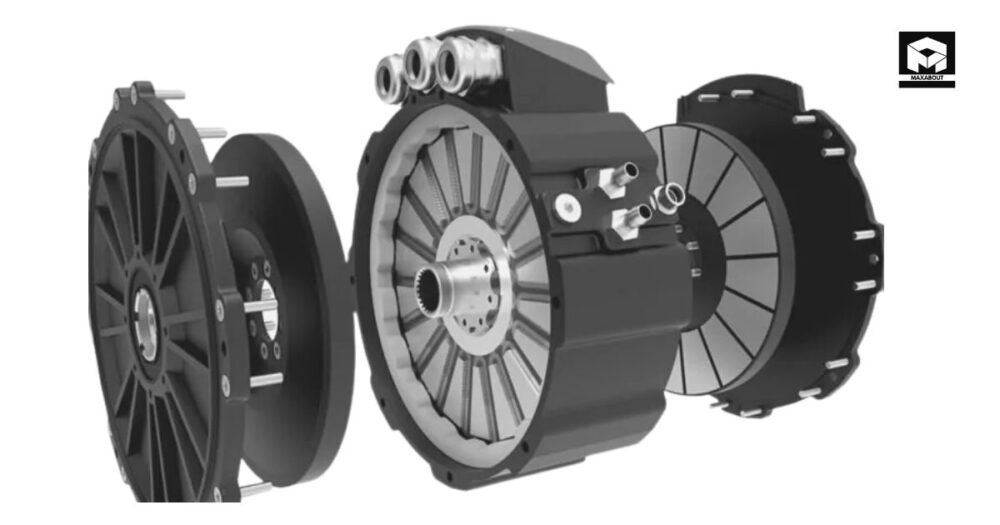
Design and Functionality
Axial flux motors are a type of electric motor that have a unique design. Unlike traditional motors, they have a flat shape, which allows for a more compact structure. This design helps in saving space and can lead to lighter vehicles. The flat design also allows for better cooling, which can improve performance.
Advantages Over Radial Flux Motors
- Higher power density: They can produce more power in a smaller size.
- Lightweight: Their design often results in a lighter overall weight.
- Better thermal management: The flat shape allows for more efficient heat dissipation.
Use in Electric Two-Wheelers
Axial flux motors are becoming popular in electric two-wheelers for several reasons:
- They provide excellent acceleration.
- Their compact size allows for more design flexibility in vehicles.
- They can improve the overall efficiency of the electric system.
In summary, axial flux motors are a promising technology for the future of electric two-wheelers, offering benefits in size, weight, and performance.
Comparing Different Motor Types
Performance Comparison
When looking at different types of motors, it’s important to understand how they perform. Here are some key points:
- Speed: Some motors can reach higher speeds than others.
- Torque: This is how much power the motor can deliver at low speeds.
- Efficiency: How well the motor uses energy can vary greatly.
Cost Analysis
The cost of motors can differ based on several factors:
- Manufacturing costs: Some motors are cheaper to make.
- Maintenance costs: Some require more upkeep than others.
- Initial purchase price: This can vary widely depending on the type of motor.
Best Use Cases for Each Motor Type
Different motors are better for different situations. Here are some examples:
- BLDC Motors: Great for high efficiency and low maintenance.
- Induction Motors: Often used in larger electric bikes for their durability.
- Hub Motors: Ideal for city commuting due to their compact design.
Understanding the differences between motor types helps in making the right choice for electric two-wheelers. Each motor has its strengths and weaknesses, so it’s essential to consider what you need.
Future Trends in Electric Two-Wheeler Motors
Emerging Technologies
The electric two-wheeler market is rapidly evolving. Some of the new technologies to watch include:
- Solid-state batteries that promise longer life and faster charging.
- Wireless charging systems that make recharging more convenient.
- Advanced smart features that enhance user experience and safety.
Predicted Developments
Experts believe that the following changes will shape the future:
- Increased focus on sustainability and eco-friendly materials.
- More powerful and efficient motors that improve performance.
- Greater integration of artificial intelligence for better control and navigation.
Impact on Electric Two-Wheeler Market
The growth of these technologies will likely lead to a surge in electric two-wheeler sales. As more people become aware of the benefits, we can expect:
- A wider variety of models to choose from.
- Lower prices due to increased competition.
- Enhanced infrastructure for charging and maintenance.
The future of electric two-wheelers looks bright, with innovations that promise to make them more efficient, affordable, and user-friendly.
Conclusion
In summary, electric two-wheelers use various types of motors, each with its own strengths and weaknesses. From hub motors that are easy to install and maintain, to mid-drive motors that offer better performance on hills, there’s a motor for every rider’s needs. Understanding these differences can help you choose the right electric bike or scooter for your lifestyle. As technology continues to improve, we can expect even more exciting developments in electric motors, making our rides smoother and more efficient.
Frequently Asked Questions
What are the main types of motors used in electric two-wheelers?
The main types of motors found in electric two-wheelers include Brushless DC Motors (BLDC), Brushed DC Motors, Permanent Magnet Synchronous Motors (PMSM), Induction Motors, Hub Motors, Mid-Drive Motors, Switched Reluctance Motors (SRM), and Axial Flux Motors.
Why is motor selection important for electric two-wheelers?
Choosing the right motor is crucial because it affects the bike’s speed, efficiency, and overall performance. A good motor can make riding smoother and more enjoyable.
How do Brushless DC Motors work?
Brushless DC Motors use magnets and electronic controllers instead of brushes to create movement. This design helps them run more efficiently and last longer.
What are the benefits of using Hub Motors?
Hub Motors are built into the wheel, making them easy to install. They provide good power and are often quieter than other types of motors.
What is the difference between Hub Motors and Mid-Drive Motors?
Hub Motors are located in the wheel, while Mid-Drive Motors are placed in the middle of the bike. Mid-Drive Motors usually offer better balance and performance on hills.
Are Brushed DC Motors still used in electric two-wheelers?
Yes, Brushed DC Motors are still used, especially in lower-cost models. However, they are less common now because they require more maintenance.
What makes Permanent Magnet Synchronous Motors efficient?
Permanent Magnet Synchronous Motors are efficient because they use magnets to create strong magnetic fields, which helps them use less energy while providing good power.
What future trends can we expect in electric two-wheeler motors?
In the future, we may see new technologies that make motors lighter, more efficient, and more powerful. This can lead to better performance and longer battery life for electric two-wheelers.

